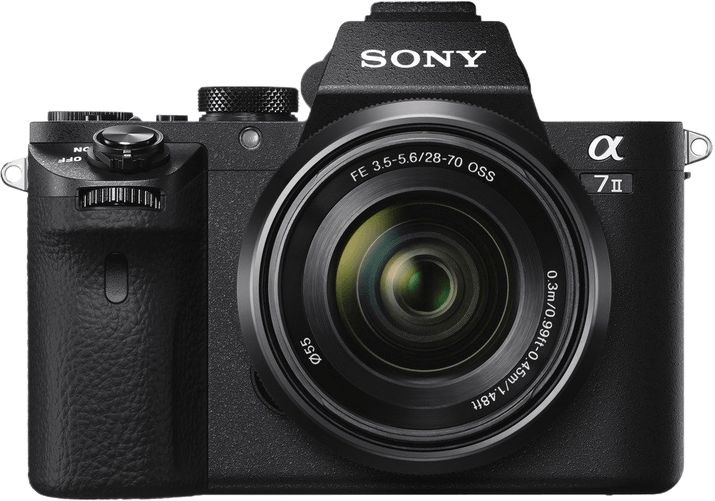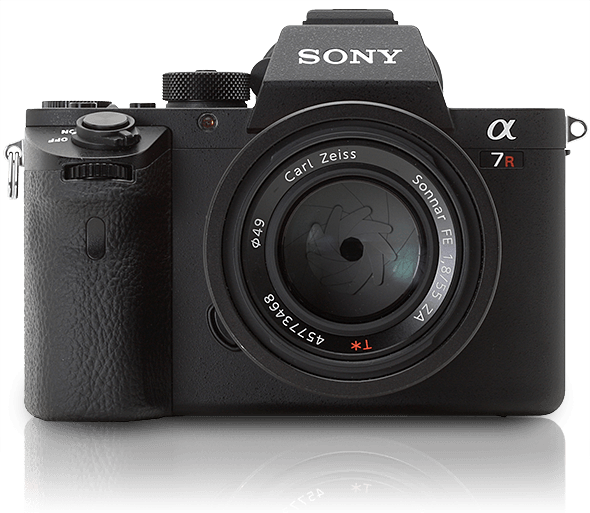Sony a7 II vs a7R II Comparison
Sony a7 II

Sony a7R II

The Sony a7R II edges out the Sony a7 II with a score of 70/100 compared to 68/100. Both cameras are mirrorless and share identical dimensions at 127 x 96 x 60mm. They were released within a year of each other, with the a7 II in 2014 and the a7R II in 2015.
The a7R II surpasses the a7 II with a higher launch price of $3198, reflecting its superior features. Additionally, the a7R II weighs slightly more at 625g, compared to the a7 II’s 599g. This extra weight may provide better stability for certain users.
On the other hand, the Sony a7 II boasts a lower price tag at $1600, making it more accessible and budget-friendly. Despite the lower score, it still offers excellent performance for its price range.
Taking these factors into account, the Sony a7R II is the better camera due to its higher score and advanced features. However, the Sony a7 II remains a strong contender for those seeking a more affordable option.
Sony a7 II vs a7R II Overview and Optics
When comparing the optics of the Sony a7 II and the Sony a7R II, the a7R II comes out on top with a score of 81/100, while the a7 II scores 78/100. Both cameras share several specifications, such as a CMOS sensor, Bionz X processor, full-frame sensor size, Sony lens mounts, and image stabilization. Their shooting speed is also the same at 5 frames per second.
The Sony a7R II excels in the optics department due to its higher megapixel count of 42.4, compared to the a7 II’s 24.2 megapixels. This difference allows the a7R II to capture images with higher resolution and detail. Additionally, the a7R II’s sensor has a DXOMARK score of 98, which is notably higher than the a7 II’s score of 90. This indicates that the a7R II has better overall image quality, dynamic range, and low-light performance.
On the other hand, the Sony a7 II still has its merits. Its lower megapixel count can result in smaller file sizes, which may be beneficial for those who need to conserve storage space or require faster processing times. However, this advantage may not be significant enough to outweigh the superior image quality provided by the a7R II.
In comparing the optics of these two cameras, the Sony a7R II is the clear winner due to its higher megapixel count and superior sensor performance. Although the a7 II may have some minor advantages, they are not enough to close the gap in overall image quality. Therefore, if optics are a primary concern, the Sony a7R II is the better choice.
Sony a7 II vs a7R II Video Performance
The Sony a7 II and Sony a7R II both have a video score of 56/100, indicating identical performance in their video capabilities. Despite this identical score, there are differences in their video specifications that may sway a potential buyer’s decision.
Both cameras share some common features in their video capabilities. Neither camera has built-in time-lapse functionality, and both can record video with a maximum frame rate of 30fps or higher. However, the similarities end there.
The Sony a7R II outperforms the a7 II in terms of maximum video resolution and dimensions. The a7R II is capable of recording 4K video at a resolution of 3840 x 2160, which is significantly higher than the a7 II’s Full HD resolution of 1920 x 1080. This higher resolution results in more detailed and sharper video footage, making the a7R II a better choice for those who prioritize video quality.
On the other hand, the Sony a7 II has a higher maximum video frame rate, reaching up to 60fps, compared to the a7R II’s maximum of 30fps. This higher frame rate enables smoother video playback, particularly for fast-moving subjects or action scenes. For users who prioritize video fluidity over resolution, the a7 II would be a more suitable option.
When comparing the video capabilities of the Sony a7 II and Sony a7R II, the decision ultimately depends on the user’s priorities. The a7R II offers superior video quality with its 4K resolution, while the a7 II provides smoother playback with its higher frame rate. Both cameras have their strengths, and the best choice will depend on individual preferences and requirements.
Sony a7 II vs a7R II Features and Benefits
The Sony a7 II and Sony a7R II both have a feature score of 57/100, making them equal in this aspect. Both cameras share several specifications, including a 3-inch screen size, flip screen, lack of GPS, and the presence of WIFI. Neither camera has a touchscreen or Bluetooth capabilities.
Despite having the same feature score, the Sony a7R II offers advantages over the Sony a7 II. The a7R II has a slightly higher screen resolution at 1,228,800 dots, compared to the a7 II’s 1,230,000 dots. This difference in resolution provides slightly clearer and sharper image previews and menu navigation on the a7R II.
On the other hand, the Sony a7 II also has its own advantage, although it may not be significant for some users. The a7 II shares all the essential features with the a7R II, making it a more budget-friendly option for those who do not require the marginally higher screen resolution offered by the a7R II.
Taking all these points into account, both the Sony a7 II and the Sony a7R II cameras offer similar features, with the a7R II having a slightly higher screen resolution. The choice between these two cameras ultimately depends on the user’s preferences and budget. If the slightly better screen resolution is important, the a7R II would be the better choice. However, if the user is looking for a more affordable option with similar features, the a7 II would suffice.
Sony a7 II vs a7R II Storage and Battery
The Sony a7 II outperforms the Sony a7R II in storage and battery. Both cameras share common specifications, including having one memory card slot and accepting SD/SDHC/SDXC and Memory Stick Duo/Pro Duo/Pro-HG Duo memory cards.
The Sony a7 II holds an advantage with a longer battery life, providing 350 shots per charge, while the Sony a7R II only offers 290 shots. Both cameras use the same NP-FW50 battery type. However, the Sony a7R II does not have any distinct advantage in storage and battery over the Sony a7 II.
Considering these points, the Sony a7 II is the preferable choice when focusing on storage and battery capabilities.
Sony a7 II vs a7R II Alternatives
Still not ready to make a decision? Check out our other popular camera comparisons for inspiration:
